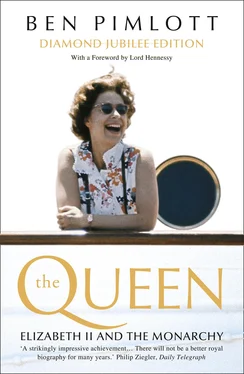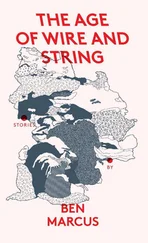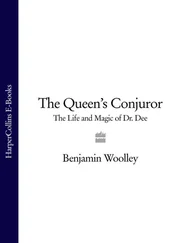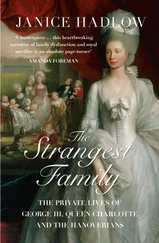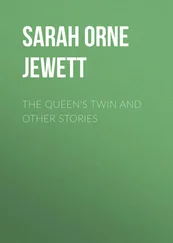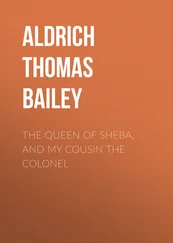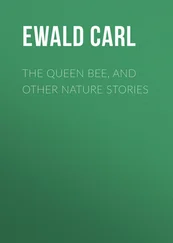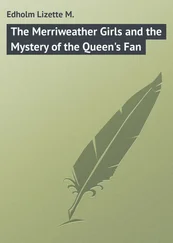In short, the Wedding was to be regarded – in the Establishment, but also in the Labour Government version – as a reminder of the direct link that supposedly existed between royal familial virtue and the constitutional and political functions of the Monarchy; and the public rejoicing as a celebration of a democratic system which worked. The whole occasion could be seen as a kind of victory parade for liberty, for a constitution, ‘still the most sea-worthy of all political craft,’ which had ‘weathered the storms of two world wars’, and for a family which provided a vital human ingredient. Trevelyan’s argument was pragmatic, yet also romantic. ‘In Great Britain the Crown is the least criticised of our domestic institutions’, he claimed; ‘throughout the Dominions and Colonies it is the point on which the eyes of loyalty are turned from across every ocean. Affection for a King’s person and family adds warmth and drama to every man’s rational awareness of his country’s political unity and historic tradition. It is a kind of popular poetry in these prosaic times.’ 86
What Trevelyan did not say – something which provided an important element in the Empire-wide celebration of an essentially personal event – was that ‘family’ had come in the dozen years since George V’s death to encroach still further on the other aspects of Monarchy. As the author of an internal Cabinet Office paper on the functions of the Prime Minister put it in June 1947, not only was it absolute doctrine that the King did nothing political except on ministerial advice, ‘the tendency has been to regard more and more matters as having political significance’. 87The Second World War, the election of a highly political Labour Government, and the personality of George VI, had all contributed to this tendency, which had rendered the areas of royal activity that were controversial, or open to normal criticism, nugatory, and narrowed the range of public interest in royal figures and royal lives, without removing its intensity.
Thus, the reduction of the Royal Family to picture book iconography did not diminish public enthusiasm: indeed, by removing all remaining partisan elements, it enhanced it. Appreciation of the virtues of the British system turned into an appreciation of personages from whom all hint of blame had been removed for anything that went wrong – yet who could be thanked for the things that had gone right. The biggest of these was survival. In the late 1940s, apart from the United States, British democracy had no major-state rival, and this was a point, not just for patriotic pride, but also for sober contemplation on the constitutional reasons why it should be so. The point was contemporary and urgent: amongst other things, the Wedding – the ‘splash of colour’ as Churchill called it – was a propaganda blast against totalitarianism at the start of the Cold War. ‘To every foreigner present,’ Wheeler-Bennett was able to write a few years later, the ceremonies, processions and public enthusiasm were ‘an object lesson, doubly expressive in the existing distressed state of Europe, of the stability of Britain’s political institutions, and of the unity of the nation in its respect for tradition and its loyalty to the throne’. 88
Chapter 8
ANY HOPE THAT, by leaving London for a supposedly private honeymoon in the country, Elizabeth and Philip could escape national attention or at any rate pretend it did not exist, was quickly disappointed. The public hunger, raised to such a level, could not simply be switched off at the moment when it became convenient to do so. The couple were due to spend the first part of their honeymoon at Uncle Dickie’s house Broadlands, near Romsey in the New Forest. When they got off the train at Winchester, the Princess was observed to have a corgi with her – symbol of the domesticity she longed for. But the crowds would not allow it. Having learnt of the whereabouts of the Princess and the Duke, sightseers lay in wait. On the first Sunday after the Wedding, in a foretaste of what was to come, a mass of them surged into Romsey Abbey, where the couple were due to attend Matins. Some – unable to get seats in the church – carried ladders, chairs, and even a sideboard into the churchyard to stand on, in order to get a better look. After the service, less voracious royal enthusiasts queued (it was an age of queuing) outside the Abbey, in order to take their turn at sitting in the seats that royalty had sat in. 1
After a week under siege at Broadlands the royal couple at last evaded their pursuers by travelling north to Birkhall. 2They returned to the Palace in time for the King’s fifty-second birthday on December 14th. ‘The Edinburghs are back from Scotland,’ Colville wrote the following day. ‘She was looking very happy, and, as a result of three weeks of matrimony, suddenly a woman instead of a girl. He also seemed happy, but a shade querulous, which is, I think, in his character.’ 3One reason for querulousness was that, among all the prewedding preparations, one aspect of their future had been neglected: where they planned to live. Following their engagement they had chosen Sunninghill Park, near Ascot, as their future country home. In August, however, Sunninghill was gutted by fire. Chips Channon recorded that he had been asked if he would let or lend his house to the couple for several months while they found somewhere else, but had turned down the request on the grounds that it would mean too much upheaval. 4Instead, they obtained a lease on Windlesham Moor, near Sunningdale in Surrey. This was not immediately available, and in any case was only for weekend use. Their London residence was to be Clarence House in Stable Yard, at the south angle of St James’s Palace. This imposing four-storey mansion had been built for William IV when Duke of Clarence in 1824. Its most recent occupant had been the Duke of Connaught, who had died in 1942, since when it had been unoccupied. In addition to the neglect of an elderly royal duke, there had been serious damage from bombing. Renovations took more than eighteen months, and the couple were unable to move in until July 1949.
In the meantime, they lived in Buckingham Palace. Crawfie believed that this was a mistake, that the Princess needed to get away from her parents. 5Philip – beginning to experience the brutal consequences to his own life of such a marriage – may have felt the same. However, as the popular papers eagerly pointed out, the Palace was convenient for the office: Philip had been given a desk job working for the Director of Operations at the Admiralty, and was able to walk there every morning along the Mall, despite the stares of passers-by.
It was an odd period for both of them: Elizabeth at first living a life which on the surface had altered remarkably little since before her engagement, Philip undergoing the profound change of outlook, circumstance and expectation that accompanied his choice of mate. Both worked, though neither of them very strenuously. They took a keen interest in the Clarence House renovations, often visiting the initially gloomy building. Sometimes they joined in – Elizabeth amusing herself by mixing the paints for the walls of the Adam-style dining-room, which was hung with Hanoverian portraits, and by furnishing the house with wedding presents. When eventually they moved in, the Princess and her husband had separate but communicating bedrooms, with the dressing-tables only a few feet from the joint door, so that they could talk through it when they were getting ready for dinner. According to the Duke’s valet, John Dean, when Bobo MacDonald was helping Elizabeth and he was helping Philip, the couple ‘would joke happily through the left-open door.’ 6
Getting settled into suitable accommodation took some time to sort out. Money was quicker – though by no means automatic. The Select Committee report on the Civil List was delivered promptly on December 11th, and discussed on the floor of the House six days later. The debate – as the Manchester Guardian put it – was of ‘peculiar interest’. 7Against the background of the Wedding on the one hand, and the split vote in the Committee on the other, it provided the first opportunity since the Abdication for a proper public exploration of the role and function of the Monarchy. It was also an exercise in temperature taking: for the vote was a free one, and the House, with its large Labour majority, was as far tilted away from automatic monarchism as at any time since 1918.
Читать дальше
